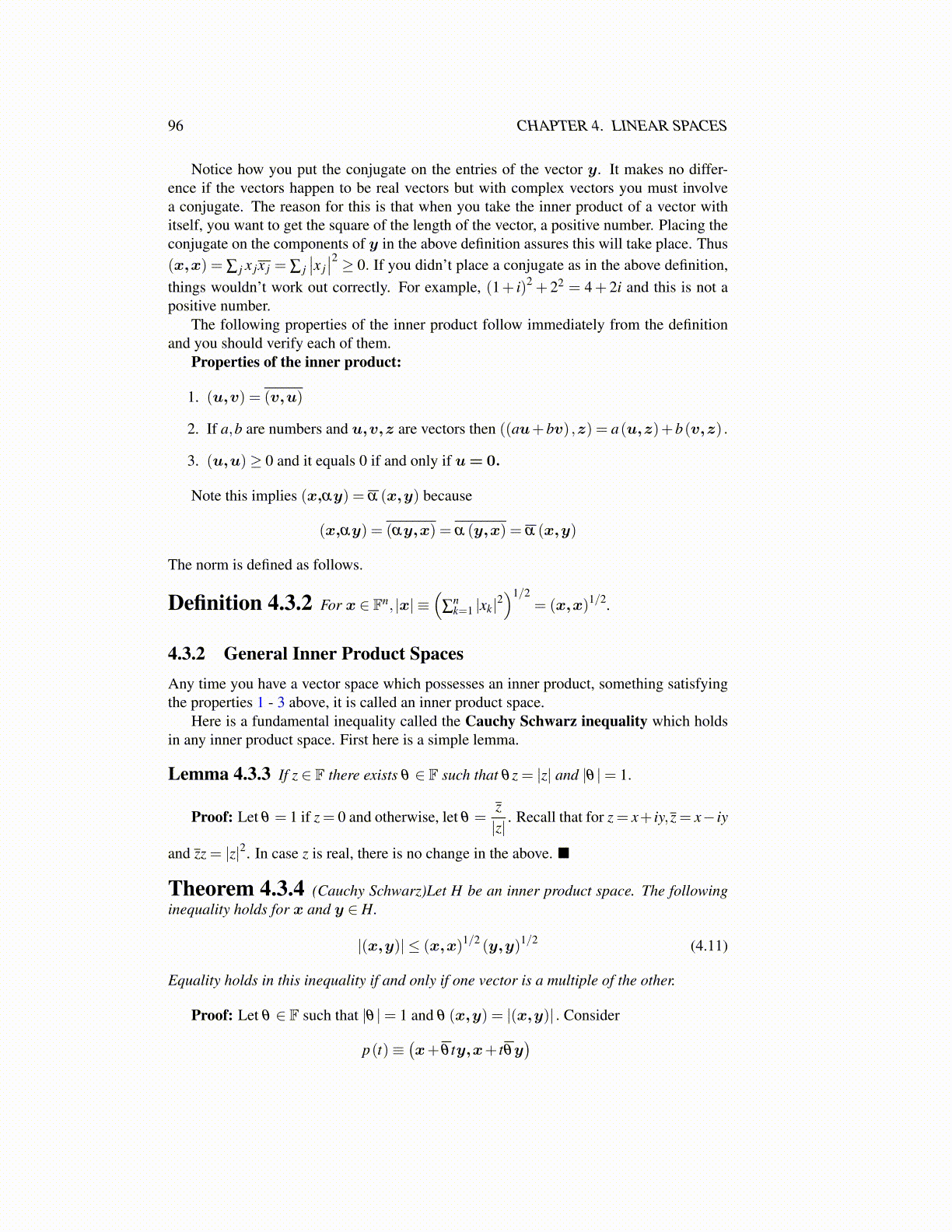
96 CHAPTER 4. LINEAR SPACES
Notice how you put the conjugate on the entries of the vector y. It makes no differ-ence if the vectors happen to be real vectors but with complex vectors you must involvea conjugate. The reason for this is that when you take the inner product of a vector withitself, you want to get the square of the length of the vector, a positive number. Placing theconjugate on the components of y in the above definition assures this will take place. Thus(x,x) = ∑ j x jx j = ∑ j
∣∣x j∣∣2 ≥ 0. If you didn’t place a conjugate as in the above definition,
things wouldn’t work out correctly. For example, (1+ i)2 + 22 = 4+ 2i and this is not apositive number.
The following properties of the inner product follow immediately from the definitionand you should verify each of them.
Properties of the inner product:
1. (u,v) = (v,u)
2. If a,b are numbers and u,v,z are vectors then ((au+bv) ,z) = a(u,z)+b(v,z) .
3. (u,u)≥ 0 and it equals 0 if and only if u= 0.
Note this implies (x,αy) = α (x,y) because
(x,αy) = (αy,x) = α (y,x) = α (x,y)
The norm is defined as follows.
Definition 4.3.2 For x ∈ Fn, |x| ≡(
∑nk=1 |xk|2
)1/2= (x,x)1/2.
4.3.2 General Inner Product SpacesAny time you have a vector space which possesses an inner product, something satisfyingthe properties 1 - 3 above, it is called an inner product space.
Here is a fundamental inequality called the Cauchy Schwarz inequality which holdsin any inner product space. First here is a simple lemma.
Lemma 4.3.3 If z ∈ F there exists θ ∈ F such that θz = |z| and |θ |= 1.
Proof: Let θ = 1 if z = 0 and otherwise, let θ =z|z|
. Recall that for z = x+ iy,z = x− iy
and zz = |z|2. In case z is real, there is no change in the above. ■
Theorem 4.3.4 (Cauchy Schwarz)Let H be an inner product space. The followinginequality holds for x and y ∈ H.
|(x,y)| ≤ (x,x)1/2 (y,y)1/2 (4.11)
Equality holds in this inequality if and only if one vector is a multiple of the other.
Proof: Let θ ∈ F such that |θ |= 1 and θ (x,y) = |(x,y)| . Consider
p(t)≡(x+θ ty,x+ tθy
)